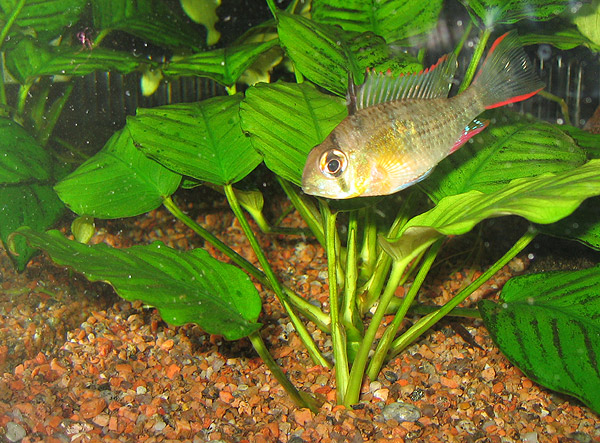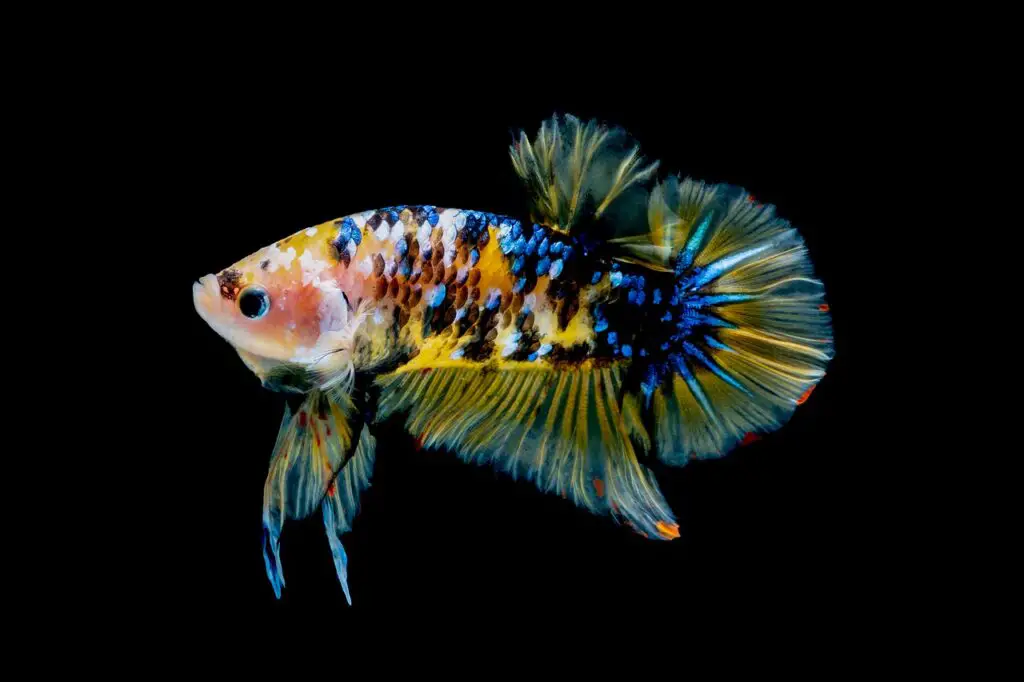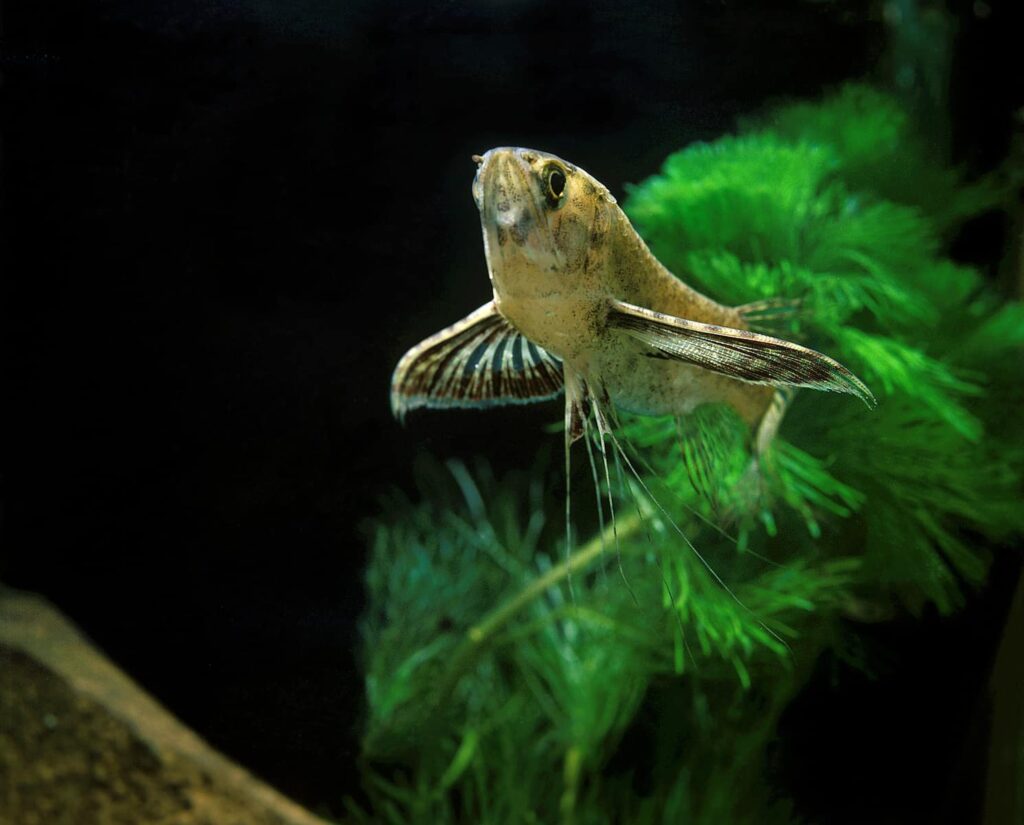How To Take Care Of A Bolivian Ram Fish
Whether you are new to fish keeping or have been doing it for years, you may have heard of Bolivian Ram fish. Cousin to the popular Blue Ram and Electric Ram, these fish are common aquatic pets. You may be wondering, how do I take care of a Bolivian Ram fish?
These fish are small and easy to care for. They prefer medium-sized tanks at room temperature and will eat most fish food. Because they are not aggressive, they can live with other community fish.
In the rest of this article, I’ll cover everything you need to know about caring for a Bolivian Ram fish.
What Is A Bolivian Ram Fish?
Bolivian Rams are a friendly, easy-to-keep freshwater fish. They are native to the Amazon River basin in Bolivia and Brazil, and go by a few different names:
- Bolivian Ram
- Bolivian Butterfly
- Bolivian Ram Cichlid
- Ruby Crown Cichlid
- Mikrogeophagus altispinosus
Their Latin name, Mikrogeophagus, means “small earth eater,” – which is a perfect description. These fish are bottom feeders and sifters, so they generally roam around the bottom of a tank.
Bolivian Rams are relatively small, oval-shaped fish. They can reach 2 ½ to 3 ½ inches long and are often colorful once they reach adulthood. If these fish are well cared for, they can live for four-to-six years.
How Can You Tell If A Bolivian Ram Is Male Or Female?
Male Bolivian Rams are generally bigger than females. While females may only reach 2 ½ inches, males can be bigger: from 3 to 3 ½ inches. They are often more colorful than females.
Perhaps the most noticeable difference between male and female Bolivian Rams is their tales. Males have long, trailing, tapered fins. Females have smaller, rounder fins.
Are Bolivian Rams Easy to Keep?
Bolivian Rams are generally regarded as a hardy, forgiving fish, great for beginners and experts alike. These fish are not aggressive. They will get along with most other peaceful community fish.
They prefer soft water, but do just fine in slightly harder water. Tank water PH should hover between 6 and 7.5, as they prefer a slightly acidic environment. And they do best in water temperatures between 73 and 80 degrees F.
Here are some tips on caring for a Bolivian Ram.
General Care
Bolivian Rams do best in clean, well-oxygenated waters. So in addition to a tank, you will also need a filter and plants. These will help keep your waters clean and well oxygenated. The plants provide an added benefit: plenty of places for your Bolivian Ram to hide and relax!
You should also consider having a tank heater. These fish prefer room temperature water, but without a consistent heating source, the environmental temperature could fluctuate and ultimately harm them.
Food
Bolivian Rams are omnivores: they eat both plants and proteins. They eat a wide range of fish food: from sinking pellets and flake food to frozen bloodworms and frozen shrimp.
You should feed them two or three times a day in small batches, rather than feeding them one big meal. Feel free to mix up their diet throughout the day. For example, you could feed them flake food in the morning and afternoon, then feed them frozen shrimp at night.
It’s important to feed them quality food and to feed them on a regular schedule, especially if you have a young Bolivian Ram. Often, the young ones are brown and dull – feeding them good food will help them color up!
Tank Environment and Care
Experts recommend a tank between 20 and 30 gallons for Bolivian Rams – this gives them enough space to swim and shelter if they need to.
Bolivian Rams enjoy calm waters like their native river basin. Most filters have an outflow that you can adjust to slow the water current.
Speaking of water, you should try to keep nitrates down to around 20 parts per million. Luckily, in a medium-sized tank with a few tank mates, this is easy to manage. You should only need to do a partial water change (20-25%) about once a week.
Finally, how should you decorate your tank? Because they are bottom feeders, you should line the bottom with sand or a sand-like material. The tank should be plentiful with plants. As stated earlier, this will help keep oxygen levels in check and provide your fish a safe place to hide if they get spooked.
Tank Mates
As stated earlier, Bolivian Rams are peaceful fish that make great tank mates. However, there are some details you should keep in mind.
Bolivian Rams generally don’t do well in tanks smaller than 20 gallons – especially if they are sharing with a bunch of other fish! These fish enjoy a bit of space to live and breed.
Any communal, nonaggressive fish should do well with Bolivian Rams. Species like gouramis, tetras, guppies, plecos, and cory cats can all live side-by-side with these fish.
You can even keep a group of Bolivian Rams together. A pair of males or a pair of females will do just fine. Of course, don’t put males and females together unless you want to breed them!
However, you should not pair different kinds of rams together. Despite their timid nature, they may fight each other for the same space. So a species like Blue Ram or Electric Ram should not be kept in the same tank as your Bolivian Rams.
Finally, you should know that Bolivian Rams become territorial when breeding. They will defend their breeding ground and their eggs from their tank mates. So if you plan to breed Bolivian Rams, make sure they have enough space and won’t be bothered!
Breeding
Like almost everything with this fish, breeding is also relatively straightforward. Bolivian Rams prefer to lay their eggs on a flat, sheltered surface. A cave or a quiet corner in your tank is great.
They make for pretty good parents too! These fish will become territorial in their breeding area and will protect their eggs until they hatch. Their eggs hatch after about 60 hours.
Some find that breeding Bolivian Rams can be a bit fussy. They prefer to choose a partner on their own – so if you are trying to breed them, grouping them up and letting them form pairs is the best way to go.
Once the fry hatch, it won’t be long until they are swimming along on their own. Experienced breeders will often separate the fry from the tank at this point to prevent them from being eaten by tank mates.



